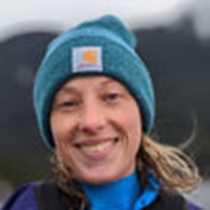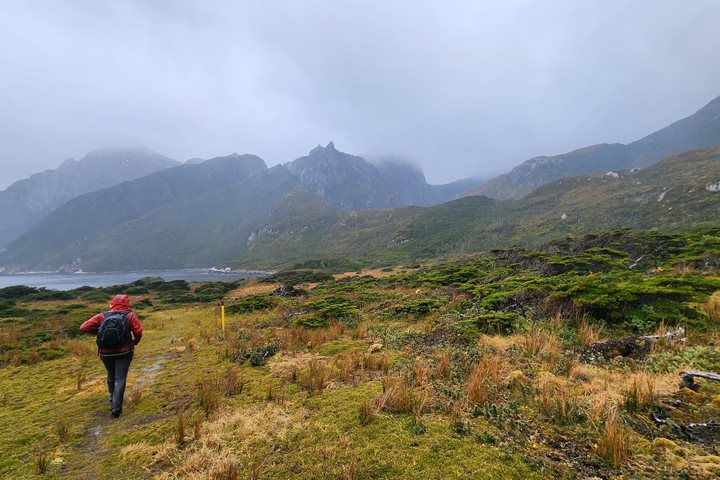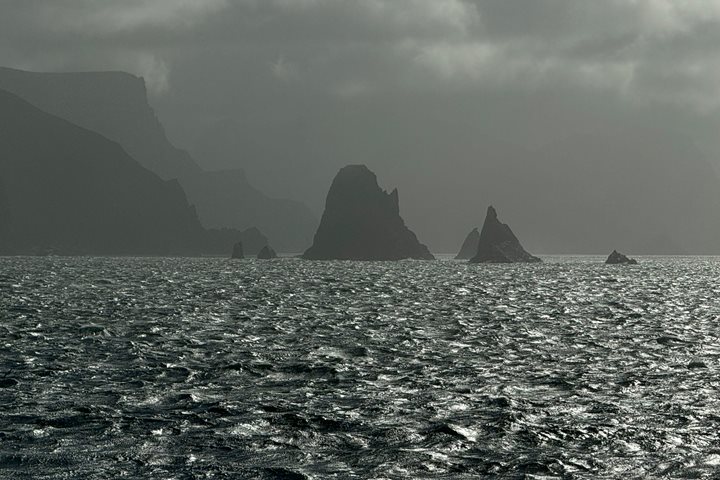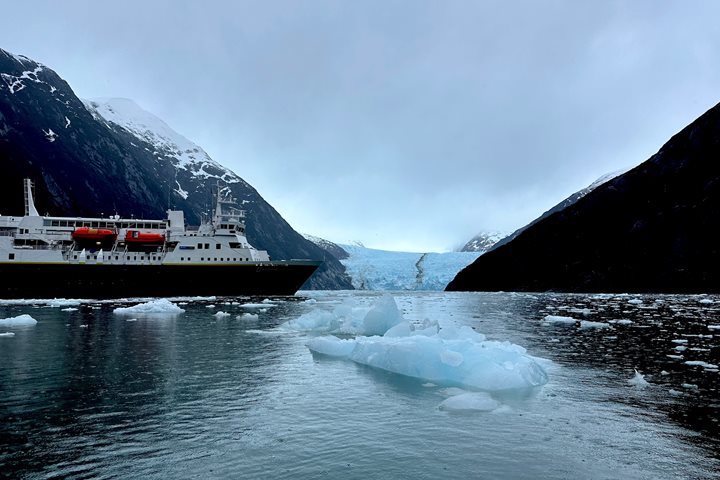Anticipation aboard National Geographic Explorer filled the air as we headed towards the long-awaited Chilean fjords and the Cordillera Darwin range. As we cleared customs, a presentation by naturalist Dan Olsen, “Magellan, Drake, and the Beagle,” was up first for the morning. This was followed by naturalist Javier Cotin’s presentation, “Seabirds of Patagonia and the Southern Ocean.
After lunch, everyone bundled up in layers for our first Zodiac exploration in Pia Fjord. The weather has offered a little bit of everything, including sun, clouds, wind, snow, rain, and even some hail! As the weather moved in and out, we were greeted with views of spectacular glaciers, ice-carved valleys and peaks, and waterfalls cascading down the mountainside. Bergy bits and brash ice were piled in front of both tidewater glaciers, which seemed to grow and expand up and up into the clouds. Hints of deep blue peeked through the crevasses, and guests caught brief glimpses of two small calving events. It was a great day to begin our exploration of the intricate fjord channels here in Chilean Patagonia.







